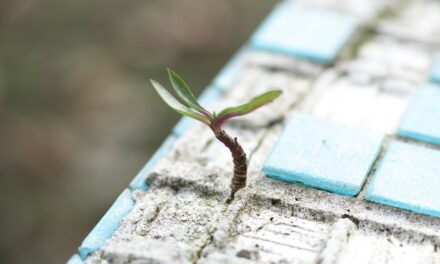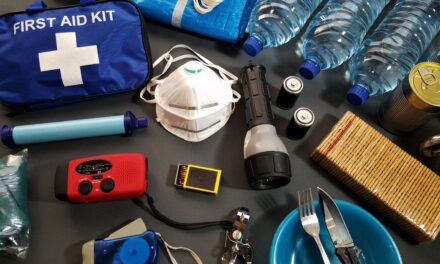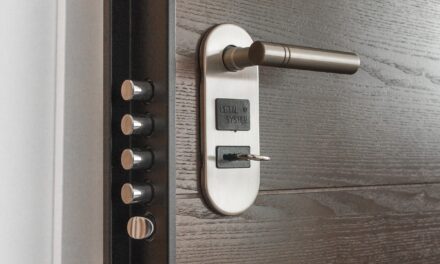In today’s unpredictable world, the safety and security of your home are paramount. With the rise in natural disasters, social unrest, and other emergency scenarios, fortifying your home has become a necessity for those looking to protect their families and assets. This comprehensive guide delves into essential DIY home fortification tips, designed to bolster your home’s defenses against a variety of threats. By integrating simple yet effective strategies, you can transform your living space into a secure haven, ensuring peace of mind in tumultuous times.
Home fortification is not just about deterring intruders; it’s about creating a resilient living environment that can withstand adverse conditions, from extreme weather to potential lockdowns. Whether you reside in an urban apartment or a countryside homestead, there are numerous ways to enhance your home’s security without breaking the bank. This article will guide you through the process of assessing your home’s vulnerabilities, prioritizing improvements, and implementing practical fortification measures.
The concept of DIY home fortification is rooted in the principles of self-reliance and preparedness. It involves a holistic approach, encompassing everything from reinforcing entry points to securing food and water supplies. Our goal is to provide you with actionable insights and expert advice on how to effectively fortify your home using materials and techniques that are accessible to the average homeowner.
As we explore various home fortification strategies, we’ll focus on both short-term solutions for immediate protection and long-term improvements for sustained security. From simple upgrades like window locks and door reinforcements to more advanced projects such as building safe rooms and installing surveillance systems, this guide covers a wide range of topics tailored to the needs of the modern prepper.
Join us as we embark on a journey to fortify your home. By the end of this guide, you’ll have a comprehensive understanding of how to enhance your home’s defenses, ensuring that you and your loved ones can face any challenge with confidence. Let’s begin the process of turning your home into a fortress, one DIY project at a time.
Blueprints for a Bulletproof Home: Practical Fortification Strategies
Securing the Perimeter
The first line of defense in home fortification is securing the perimeter. This includes fencing, gates, and natural barriers that can deter intruders. Consider planting thorny bushes or constructing a fence with limited access points. Motion-sensor lighting around the perimeter can also act as a deterrent, illuminating any potential threats before they reach your home.
Reinforcing Doors and Windows
Doors and windows are common entry points for intruders. Reinforce these vulnerabilities by installing deadbolts, security screens, and window locks. For added protection, consider upgrading to impact-resistant glass or applying security film to existing windows. Door reinforcement kits can also significantly increase the strength of your doors against forced entry.
Creating Safe Zones
Designating a safe room within your home can provide a secure refuge in case of a break-in or natural disaster. This room should be reinforced to resist forced entry and equipped with emergency supplies, including water, non-perishable food, a first-aid kit, and a means of communication. Reinforced steel doors and walls can further enhance the security of your safe zone.
Surveillance and Alarm Systems
Modern technology offers a range of options for home surveillance and security. Wireless security cameras, doorbell cameras, and motion detectors can provide real-time monitoring of your property. An alarm system, preferably monitored by a security service, can alert you and local authorities to any unauthorized access.
Fire Safety and Environmental Protection
In addition to security threats, home fortification should address fire safety and environmental hazards. Smoke detectors, fire extinguishers, and carbon monoxide detectors are essential. For areas prone to flooding or wildfires, consider installing sump pumps, fire-resistant landscaping, and ember-resistant vents.
Expert Insights: Beyond the Basics of Home Fortification
Home fortification is an ongoing process that evolves with new threats and technologies. Engaging with a community of preppers and security experts can provide valuable insights and innovative solutions. Workshops and online forums are great resources for learning advanced techniques and sharing experiences.
One often overlooked aspect of home fortification is the psychological deterrent. Simple measures, such as posting security signage or participating in neighborhood watch programs, can make your home a less attractive target to potential intruders.
Lastly, it’s crucial to practice and plan for emergency scenarios with all household members. Regular drills and discussions about emergency plans can ensure everyone knows how to react in various situations, from evacuations to sheltering in place.
Strategic Enhancements for Home Security
Reinforcing Entry Points
The first step in home fortification is securing your entry points. Doors should be reinforced with high-quality deadbolts and strike plates. Consider installing smart locks for enhanced security and convenience. Windows can be fortified with security film, which prevents glass from shattering upon impact, or by installing window bars for ground-level and easily accessible windows. Additionally, reinforcing the hinges and frames can significantly increase the resistance of doors and windows to forced entry.
Lighting and Surveillance
Good lighting is a powerful deterrent against intruders. Install motion-sensor lights around your property to illuminate dark corners and potential hiding spots. Surveillance cameras, particularly those with night vision and motion detection, can provide real-time monitoring of your home’s surroundings. A visible security system not only deters potential intruders but also helps in identifying them should an incident occur.
Perimeter Defenses
Fortifying the perimeter of your property can significantly enhance your home’s security. Start with a solid fence or wall that is difficult to climb or breach. Thorny plants and bushes under windows can act as natural barriers. For added security, consider installing a gate with an access control system. This not only limits entry but also allows you to monitor who comes in and out of your property.
Safe Rooms and Emergency Exits
In extreme scenarios, having a safe room can provide a last-resort refuge for you and your family. This room should be discreetly located, reinforced to resist forced entry, and stocked with essentials such as water, food, and a communication device. Additionally, ensure that your home has clearly marked and unobstructed emergency exits. Practicing evacuation drills can also prepare your family to exit the home quickly and safely if needed.
Long-Term Fortification Projects
Structural Reinforcements
Assessing the structural integrity of your home is crucial, especially in areas prone to natural disasters. Reinforcing the foundation, roof, and walls can provide added protection against earthquakes, hurricanes, and other severe weather conditions. Consider consulting with a structural engineer to identify and address any potential vulnerabilities.
Energy Independence
Ensuring a reliable energy supply is vital for long-term home fortification. Solar panels, wind turbines, and backup generators can provide electricity during power outages. Investing in energy-efficient appliances and lighting can also reduce your dependence on external power sources.
Water Security
Access to clean water is essential for survival. Installing rainwater collection systems and having water purification methods in place can secure your water supply during emergencies. For those with space, digging a well can provide an independent water source.
Food Storage and Production
Creating a sustainable food supply involves both storing non-perishable food and growing your own produce. Consider dedicating a portion of your property to a vegetable garden and possibly raising small livestock for protein. Learning food preservation techniques can also extend the shelf life of your harvest.
Summary and Essential Takeaways: Building Your Home Sanctuary
Fortifying your home is a proactive approach to ensuring your safety and security in an unpredictable world. By implementing the DIY tips and strategies outlined in this guide, you can significantly enhance your home’s defenses against a variety of threats. Remember, home fortification is not a one-time task but an ongoing process that evolves as your needs and the external environment change.
Key Takeaways for DIY Home Fortification:
- Secure Entry Points: Reinforce doors and windows to prevent unauthorized access. High-quality locks, security films, and physical barriers can make a significant difference.
- Invest in Lighting and Surveillance: Use motion-sensor lights and surveillance cameras to deter intruders and monitor your property.
- Strengthen Your Perimeter: A robust fence, strategic landscaping, and access control systems can enhance the security of your property’s boundaries.
- Prepare for Emergencies: Establish a safe room and ensure that your home has clear emergency exits. Regular drills can improve your family’s readiness to face crisis situations.
- Focus on Structural Integrity: Reinforce your home’s structure to withstand natural disasters. Consult with professionals to address vulnerabilities.
- Achieve Energy Independence: Consider alternative energy sources like solar panels and backup generators to maintain power during outages.
- Ensure Water and Food Security: Implement systems for rainwater collection and purification. Grow your own food and learn preservation techniques to sustain your household.
DIY home fortification empowers you to take control of your safety and well-being. Whether you’re preparing for natural disasters, ensuring food security, or safeguarding against unauthorized entry, the steps you take today can provide peace of mind and protection for years to come. Start with small improvements, and gradually build up your home’s defenses as you acquire new skills and resources. Your home is your sanctuary; invest the time and effort to make it a safe and secure place for you and your loved ones.








